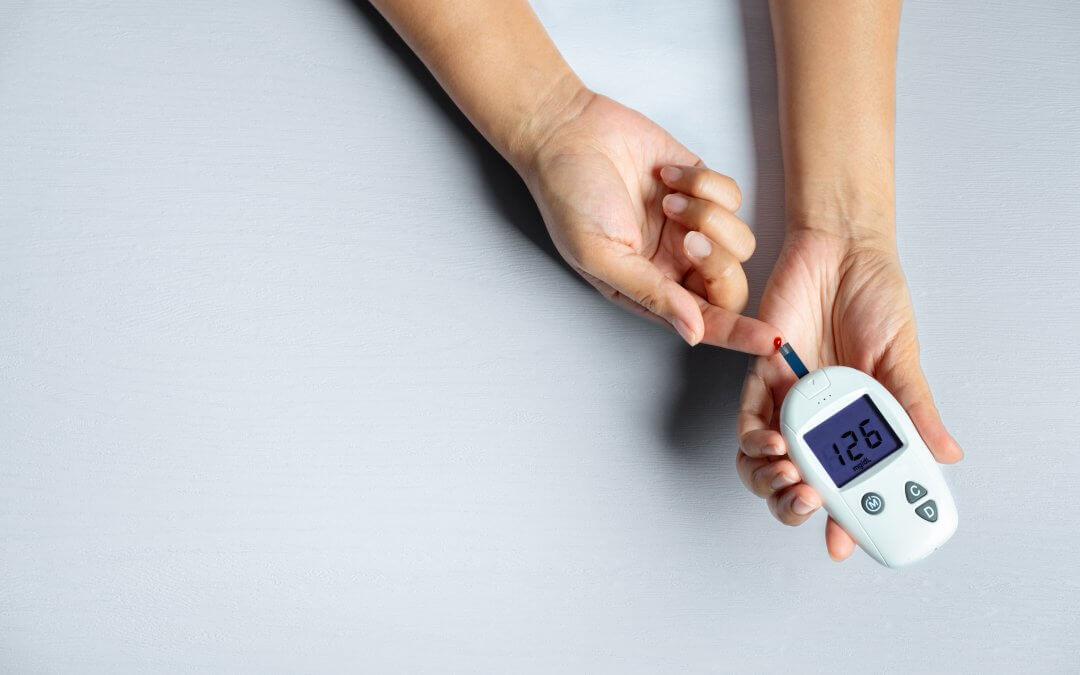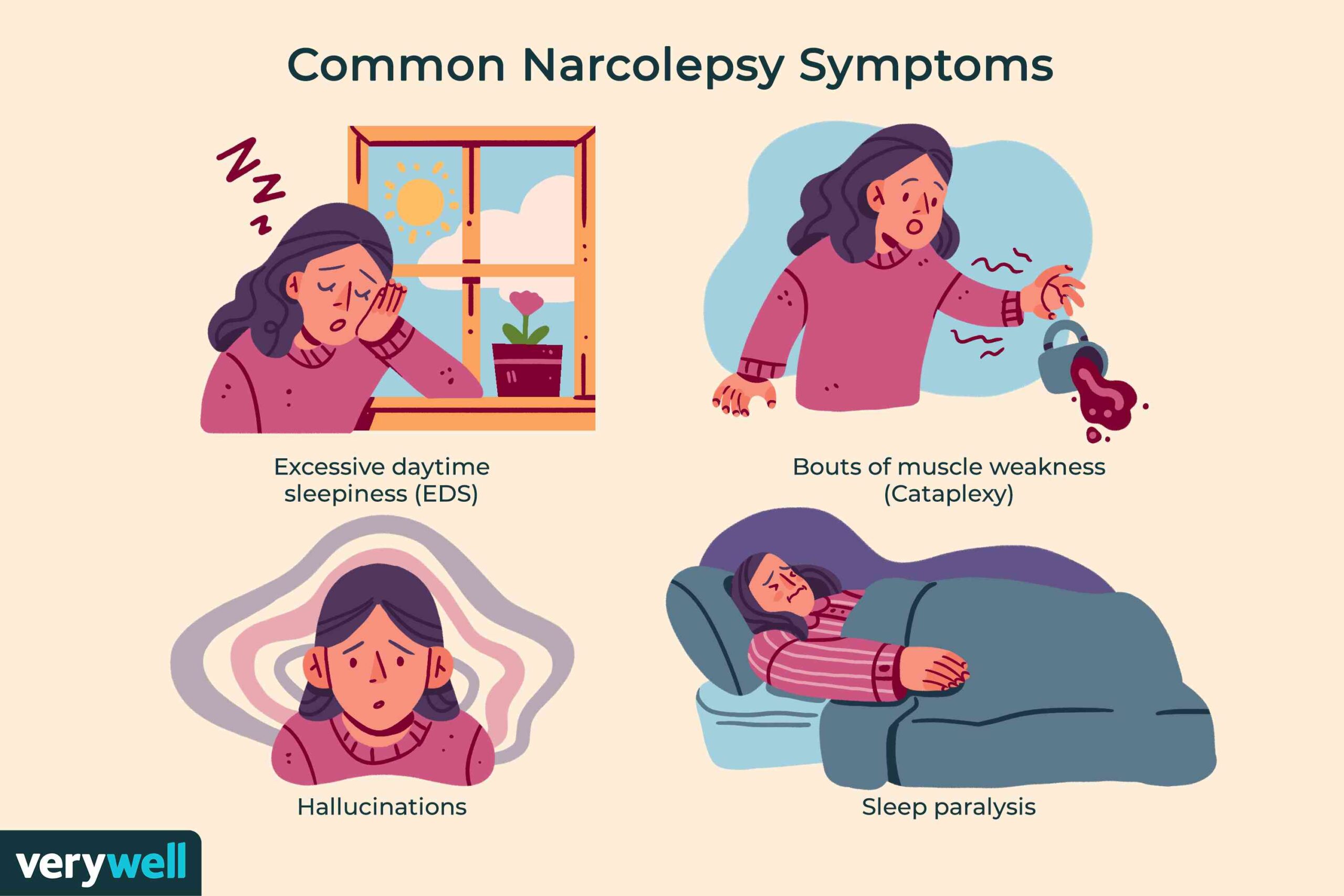Effects of diabetes on blood vessels-various aspects-
When the blood sugar level rises, the elasticity of the blood vessels in our body decreases. This will narrow the blood vessels which directly affects the flow of blood in our body. When the blood vessels in our body shrink in size, it causes a decrease in blood flow and oxygen levels in our body. As a result, the patient runs the risk of hypertension. At the same time, diabetes also affects small and large blood vessels because high blood sugar levels can damage these blood vessels.
Diabetes can greatly harm blood vessels across the body, leading them to narrow, harden, and become more susceptible to blockages, resulting in issues in the eyes, kidneys, nerves, and heart due to reduced blood circulation; this harm is mainly triggered by elevated blood sugar levels which can deteriorate the walls of small blood vessels over time.
Key points about diabetes and blood vessels:
Microvascular complications:
Diabetes mainly impacts the small blood vessels (microvessels), causing harm to organs such as the eyes (diabetic retinopathy), kidneys (diabetic nephropathy), and nerves (peripheral neuropathy).
Atherosclerosis:
Elevated blood sugar can also aid in the accumulation of plaque in larger arteries (atherosclerosis), heightening the risk of heart disease and stroke.
Mechanisms of damage:
Elevated blood sugar levels can directly harm the lining of blood vessels, leading to inflammation and hindering their proper function.
Clinical consequences:
Eye problems: Blurred vision, vision loss, and the possibility of blindness due to injury to the retinal blood vessels
Kidney disease: Diminished kidney function and potential kidney failure as a result of damage to the small blood vessels in the kidneys
Nerve damage: Tingling, numbness, and discomfort in hands and feet owing to reduced blood flow to nerves
Heart disease: Increased likelihood of heart attack and stroke because of narrowed coronary arteries
How to manage vascular complications of diabetes:
Strict blood sugar control:
Keeping blood sugar levels stable through diet, exercise, and medication is essential to reduce vascular damage.
Blood pressure management:
Regulating high blood pressure can further safeguard blood vessels
Cholesterol management:
Maintaining healthy cholesterol levels can also lower the risk of atherosclerosis
Regular checkups:
Checking for early signs of vascular complications through regular eye exams, kidney function tests, and foot checks
If Any Patient of ENT Requires Any Surgery, Opd Consultation Or Online Consultation In Clinic of ENT Specialist Doctor Dr. Sagar Rajkuwar ,He May Contact Him At The Following Address-
Prabha ENT Clinic, Plot no 345,Saigram Colony, Opposite Indoline Furniture Ambad Link Road ,Ambad ,1 km From Pathardi Phata Nashik ,422010 ,Maharashtra, India-Dr. Sagar Rajkuwar (MS-ENT), Cell No- 7387590194, 9892596635
Circulatory and cardiovascular systems
Elevated blood glucose levels can harm every component of the cardiovascular system. Therefore, there exists a strong connection between diabetes and cardiovascular issues.
Blood vessels
Surplus blood sugar diminishes the flexibility of blood vessels and leads to their constriction, obstructing blood flow. This can result in a decreased supply of blood and oxygen, raising the chances of high blood pressure and injury to both large and small blood vessels.
High blood pressure is a contributing factor for heart disease. Approximately 74% of adults with diabetes suffer from hypertension.
Damage to large blood vessels is referred to as macrovascular disease, while damage to small blood vessels is known as microvascular disease.
Complications arising from macrovascular disease encompass:
heart attack
stroke
peripheral arterial disease
Microvascular disease may also result in issues concerning the:
eyes
kidneys
nervous system
A person with diabetes can minimize the risk of cardiovascular and circulatory complications by:
managing blood sugar levels
quitting smoking
managing blood pressure and lipids
using prescription medications, such as statin drugs, to lower cholesterol
monitoring blood pressure
exercising regularly
eating a fiber-rich diet
For certain individuals with type 2 diabetes, existing guidelines suggest that healthcare providers prescribe sodium-glucose cotransporter 2 inhibitors (SGLT2) and glucagon-like peptide 1 receptor agonists (GLP-1 RA).
These medications can lower the risk of high blood sugar and cardiovascular disease. They also function to reduce weight, decrease blood pressure, mitigate systemic inflammation, and enhance cardiac function.
The guidelines endorse these for individuals who have diabetes, in addition to those with atherosclerotic cardiovascular disease who are at a high risk of heart failure, and chronic kidney disease.
These medications may also diminish the risk of chronic kidney disease progression. A physician may also prescribe them for the management of atherosclerosis unrelated to heart failure.
The nervous system
Nerve damage, or neuropathy, is a frequent complication associated with diabetes. Approximately 10–20% of individuals with a initial diagnosis of diabetes will experience nerve damage. The longer an individual has diabetes, the greater their risk of developing neuropathy.
More than half of individuals with diabetes will ultimately develop the condition.
Neuropathy can impact any area of the nervous system, including the nerves responsible for controlling autonomic or involuntary functions, such as digestion.
Nonetheless, the most prevalent type is peripheral neuropathy. This leads to pain and numbness in the extremities, particularly the legs, feet, and toes, as well as the arms, hands, and fingers.
Neuropathy can additionally impact the hips and upper legs.
According to the National Institute of Diabetes and Digestive and Kidney Diseases (NIDDK), up to half of individuals with diabetes experience peripheral neuropathy, while more than 30% have autonomic neuropathy.
The kidneys and urinary system
Over time, elevated blood sugar levels can cause harm to the blood vessels in the kidneys. This harm hinders the kidneys from filtering waste from the blood. Eventually, kidney failure may occur.
The NIDDK identifies diabetes as one of the primary causes of kidney disease. It affects 1 in 3 individuals with diabetes.
Diabetic nephropathy is a kidney condition that impacts individuals with diabetes. Learn more here.
Vision
Diabetes raises the risk of various eye issues, some of which may result in vision impairment.
Short-term issues include blurred vision resulting from high blood sugar levels. Long-term complications entail:
glaucoma
diabetic retinopathy
macular edema
cataracts
Undergoing regular eye examinations, regulating blood sugar, and avoiding or quitting smoking can all assist in safeguarding eye health in individuals with diabetes.
Find out more about the connection between blurry vision and diabetes here.
Digestive system
Damage to the nervous system can influence involuntary bodily functions, including digestion.
Gastroparesis can occur when nerve damage disrupts the digestive system’s capability to transfer food from the stomach to the small intestine.
The condition may lead to:
nausea
vomiting
acid reflux
bloating
abdominal pain
weight loss in severe cases
Learn more about diabetic gastroparesis here.
Sexual health and fertility
Diabetes-related harm to blood vessels and the autonomic nervous system might negatively impact sexual function and the body’s capacity to send and respond to sexual signals.
Erectile dysfunction is over three times more likely to occur in men with diabetes, and it can develop 10–15 years sooner than in those without the condition.
Other aspects in which diabetes can influence individuals’ confidence in their sexual life include:
the condition’s effect on mental health
concern that sexual activity may lower glucose levels, resulting in hypoglycemia
uncertainty regarding the use of an insulin pump
Nevertheless, there are methods to address all of these challenges.
Fertility
Diabetes can impact fertility in both genders.
A 2020 review of 28 studies indicates a correlation between the likelihood of type 2 diabetes and the earlier onset of puberty in females.
Menstrual irregularities are also prevalent once menstruation begins; a woman may encounter heavier menstrual flow, and menopause may commence earlier.
There is also a significant prevalence of polycystic ovary syndrome (PCOS) and obesity among individuals with diabetes, both of which can elevate the risk of fertility complications.
Diabetes can additionally lead to pregnancy complications — hence, effective blood sugar management throughout the entirety of pregnancy is crucial.
Another study from 2018 discovered that men with type 1 and type 2 diabetes generally exhibit lower sperm quality and an increased likelihood of infertility.
Skin
There are connections between diabetes and multiple skin conditions. Symptoms can vary from mild to severe.
Issues include a greater risk of:
dry skin
skin tags
dark skin patches, referred to as acanthosis nigricans
bacterial infections, such as styes or boils
fungal infections, such as thrush or athlete’s foot
itchiness
diabetic dermopathy, which involves benign yet potentially bothersome round brown, scaly patches
blisters
Research has also indicated associations between the occurrence of type 2 diabetes and psoriasis.
Ulcers can arise if a skin infection becomes serious. Ulcers are open sores that are slow to heal.
Necrobiosis lipoidica diabeticorum (NLD) begins as an elevated skin area that can turn purple and become itchy and painful. NLD is an uncommon condition that may require treatment if the sores break open.
An individual with elevated blood sugar may also have heightened levels of triglycerides, or fat, in the bloodstream. This can result in eruptive xanthomatosis, a rash of reddish-yellow lesions called xanthomas that can also signify pancreatitis.
Calluses, foot sores, and dry skin can also create difficulties. If wounds form from these, ulcers may develop. Without proper care, a foot ulcer can become critical, potentially leading to the necessity of an amputation.
Metabolic issues
Metabolism refers to the method by which the body transforms nutrients into energy. Any disruption to this process can result in various complications, some of which may pose a threat to life.
Diabetic ketoacidosis
Diabetic ketoacidosis (DKA) is a sudden and life-threatening complication associated with diabetes. It occurs when the body is unable to utilize glucose for energy, prompting it to begin breaking down fat. In this process, it produces substances known as ketones. Elevated levels of ketones can lead to an excessively acidic blood condition.
In just a few hours, this can result in several symptoms, such as:
a dry mouth
nausea and vomiting
abdominal pain
shortness of breath
loss of consciousness and coma
Without prompt treatment, DKA can be deadly.
DKA predominantly affects individuals with type 1 diabetes, but it can also occur in those with type 2 diabetes if blood sugar levels become excessively high.
Hyperosmolar hyperglycemic state
A hyperosmolar hyperglycemic state (HHS) arises when blood sugar levels are extremely elevated. It is more frequently seen in individuals with type 2 diabetes.
Symptoms develop slowly and may include:
dehydration
confusion
loss of consciousness and coma
HHS can be fatal if an individual does not receive immediate treatment.
Metabolic syndrome
Metabolic syndrome denotes a combination of conditions and symptoms, including diabetes, hypertension, and obesity.
A physician may diagnose metabolic syndrome if a patient exhibits some of the following symptoms:
high fasting blood sugar
elevated LDL (“bad”) cholesterol and decreased HDL (“good”) cholesterol
hypertension, or high blood pressure
an enlarged waist circumference due to fat around the abdomen
high triglyceride levels in the bloodstream
Risk factors for diabetes and other components of metabolic syndrome encompass low physical activity and excessive weight.
Mental well-being
Diabetes can influence an individual’s mental health in multiple ways. It may lead to:
worries regarding treatment, health, and potential complications that can induce stress, anxiety, and depression
fears regarding the expense of treatment and whether management is adequate, especially if symptoms change
mood disorders that hinder an individual from maintaining a healthy lifestyle
Acquiring extensive knowledge about diabetes can aid in alleviating stress. The more informed an individual is about their condition, the greater sense of control they will feel over their diabetes and its management.
Understanding how to respond in various scenarios can enhance an individual’s confidence and improve their overall well-being.
Collaborating with a healthcare professional can assist in minimizing these challenges. A doctor or therapist can help formulate a strategy to lower the risk of mental health issues.
Frequently asked questions
Below are answers to some frequently asked inquiries concerning diabetes.
How can I lower the risk of diabetes complications?
The longer an individual has diabetes, the more likely they are to face heart disease and other complications.
Methods to mitigate these risks include:
controlling blood sugar levels through insulin therapy or medications
improving overall health via lifestyle changes, such as maintaining a nutritious diet, engaging in physical activity, and managing blood glucose
adhering to the treatment regimen recommended by the doctor
What are the initial indications of diabetes?
The early indications of diabetes consist of urinating often, intense thirst or hunger, tiredness, and a feeling of numbness in the hands or feet.
What is gestational diabetes?
This is a different form of diabetes that arises exclusively during pregnancy. Hormones produced by the placenta hinder the body’s insulin from adequately storing glucose, and the body fails to produce sufficient insulin to balance this effect. Gestational diabetes typically resolves after childbirth.
How does diabetes affect blood vessels?
How does diabetes affect the bloodstream?
Important facts
- The number of people with diabetes increased from 200 million in 1990 to 830 million in 2022. In low- and middle-income nations, the prevalence has increased at a faster rate than in high-income nations.
- In 2022, over half of those with diabetes did not use medication for it. In lower- and middle-income nations, diabetes care coverage was the least.
- Diabetes can result in blindness, renal failure, heart attack, stroke, and lower limb amputation.
- Diabetes and kidney illness brought on by diabetes were responsible for more than 2 million fatalities in 2021. High blood glucose, also known as hyperglycemia, was responsible for about 11% of all cardiovascular fatalities.
- Maintaining a healthy diet, engaging in regular physical activity, maintaining a normal body weight, and avoiding tobacco use are all strategies to help prevent or postpone the onset of type 2 diabetes.
- With diet, exercise, medication, and frequent screening and treatment for complications, diabetes can be managed, and its effects can be prevented or postponed.


Summary
Diabetes is a persistent illness that manifests itself in two ways: either the pancreas does not create enough insulin, or the body is unable to utilize the insulin that is produced. The hormone insulin controls blood sugar levels. Uncontrolled diabetes frequently results in hyperglycemia, often known as high blood glucose or high blood sugar, which eventually causes severe harm to several bodily systems, notably the nerves and blood vessels.
The prevalence of diabetes among adults 18 and over rose from 7% in 1990 to 14% in 2022. In 2022, over half (59%) of adults 30 and older who have diabetes were not using medication to treat it. The coverage for diabetes treatment was poorest in low- and middle-income nations.
Diabetes was the direct cause of 1.6 million deaths in 2021, and 47% of all diabetes-related deaths occurred before the age of 70. Additionally, diabetes caused 530 000 deaths from kidney disease, and around 11% of cardiovascular fatalities are attributable to high blood glucose.
Diabetes-related death rates have been on the rise since 2000. In contrast, between 2000 and 2019, the chance of dying from any one of the four major noncommunicable diseases (cardiovascular diseases, cancer, chronic respiratory diseases, or diabetes) between the ages of 30 and 70 fell by 20% worldwide.
Signs
Diabetes symptoms can manifest at any moment. The signs of type 2 diabetes can be subtle and may not manifest for several years.
Among the signs of diabetes are:
- extremely thirsty
- the need to urinate more frequently than normal
- hazy eyesight
- feeling exhausted
- unintentional weight loss
Diabetes can harm blood vessels in the heart, eyes, kidneys, and nerves over time.
Individuals with diabetes are more susceptible to a variety of health issues, such as heart attack, stroke, and renal failure.
By harming blood vessels in the eyes, diabetes can lead to irreversible vision loss.
Diabetes-related nerve injury and inadequate blood flow can cause foot issues for many individuals. Foot ulcers can result from this, and in some cases, amputation may be necessary.


Diabetes type 1
Type 1 diabetes (previously known as insulin-dependent, juvenile, or childhood-onset) is distinguished by inadequate insulin production and necessitates daily insulin injections. The majority of the nine million people living with type 1 diabetes in 2017 reside in affluent nations. The cause of it is unknown, as is the way to stop it.
Diabetes type 2
The way your body utilizes sugar (glucose) for energy is impacted by type 2 diabetes. If left untreated, it prevents the body from using insulin correctly, resulting in high blood sugar levels.
Diabetes type 2 can lead to significant bodily harm over time, particularly to the nerves and vascular system.
Type 2 diabetes is frequently avoidable. Being overweight, not exercising enough, and heredity are all factors that increase the risk of developing type 2 diabetes.
Early diagnosis is essential for warding off the worst symptoms of type 2 diabetes. Routine blood tests and check-ups with a healthcare professional are the most effective ways to identify diabetes in its early stages.
Type 2 diabetes may have minor symptoms. It may take them years to be observed. Although the symptoms may resemble those of type 1 diabetes, they are frequently milder. Consequently, it could take years for the illness to be identified, even after problems have started.
Type 2 diabetes accounts for more than 95% of all cases of diabetes. Formerly known as adult onset or non-insulin dependent, type 2 diabetes was thought to only affect adults, but it is now becoming more and more common in children.
Diabetes during pregnancy
Hyperglycemia during pregnancy is when blood glucose levels are higher than normal but not high enough to be considered diabetes. During pregnancy, gestational diabetes develops.
Gestational diabetes puts women at higher risk for pregnancy and delivery complications. In the future, these women and maybe their children will also be more likely to develop type 2 diabetes.
Prenatal screening is used to identify gestational diabetes rather than reported symptoms.
Impaired fasting glycaemia and glucose tolerance
In the shift between normal and diabetic conditions, intermediate conditions include impaired glucose tolerance (IGT) and impaired fasting glycaemia (IFG). Although not always the case, those with IGT or IFG have a high chance of developing type 2 diabetes.
Avoidance
The greatest strategy for preventing or delaying the onset of type 2 diabetes is to make lifestyle modifications.
People should take the following steps to help avoid type 2 diabetes and its consequences:
- maintain a healthy weight for your body
- get at least 150 minutes of moderate activity per week to maintain your physical health.
- eat a balanced diet while limiting sugar and saturated fat.
- don’t use tobacco.
Diagnosis and therapy
Blood glucose can be tested at a low cost to enable early diagnosis. Insulin injections are necessary for the survival of those with type 1 diabetes.


Maintaining a healthy lifestyle is one of the most crucial strategies for managing diabetes.
Medication may be necessary for some individuals with type 2 diabetes in order to control their blood sugar levels. These may include insulin injections or other medications. Among the examples are:
- Metformin
- Sulfonylureas
- Inhibitors of the sodium-glucose co-transporters type 2 (SGLT-2).
In addition to medications that lower blood sugar, persons with diabetes frequently require statins to lower blood pressure and reduce the risk of complications.
To address the effects of diabetes, further medical attention may be necessary:
- Foot care to heal ulcers
- Screening for and treatment of kidney disease
- Eye tests to check for retinopathy, a condition that leads to blindness.
The response of the World Health Organization
- Offers evidence-based advice for the prevention of significant non-infectious illnesses such diabetes;
- Establishes guidelines and standards for the diagnosis and management of diabetes;
- Raises awareness of the worldwide diabetes epidemic on World Diabetes Day (November 14); and
- Monitors diabetes and its risk factors.
With a special emphasis on assisting low- and middle-income nations, the Global Diabetes Compact, a worldwide program to achieve long-term gains in diabetes prevention and care, was launched by the WHO in April 2021.
Click on the link below to learn more about this disease.
Prabha ENT Clinic, Plot no 345,Saigram Colony, Opposite Indoline Furniture Ambad Link Road ,Ambad ,1 km From Pathardi Phata Nashik ,422010 ,Maharashtra, India-Dr. Sagar Rajkuwar (MS-ENT), Cell No- 7387590194, 9892596635
Issued in public interest by –






